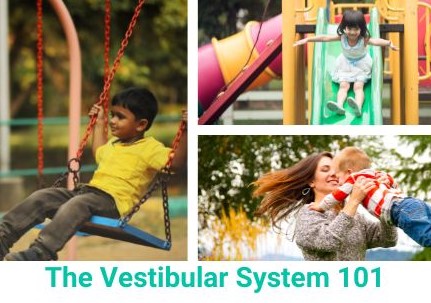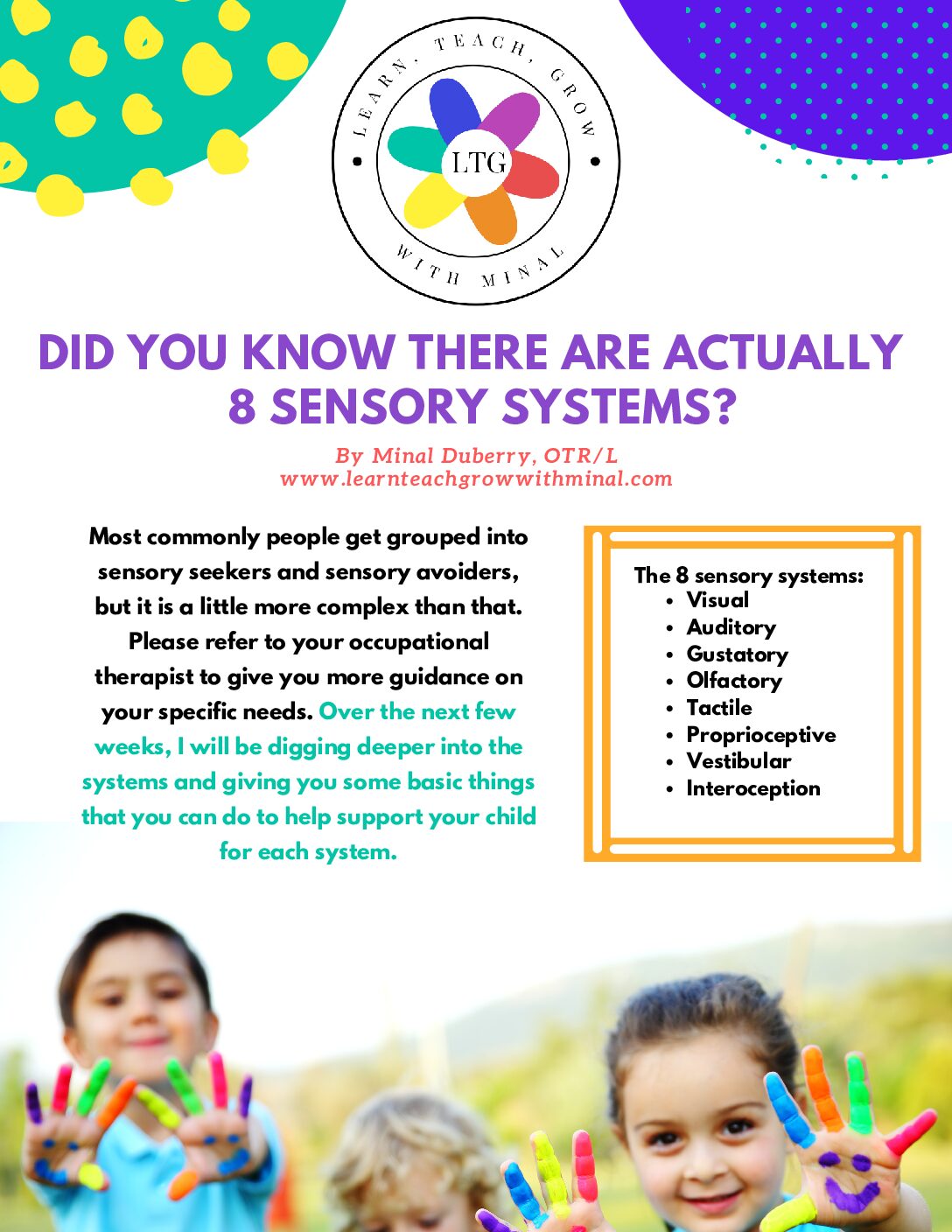
Sensory Systems 101
Sensory Systems 101
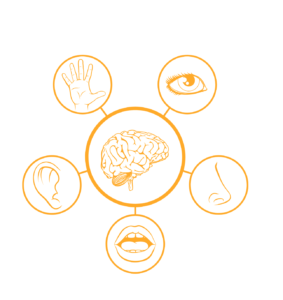 Did you know there were actually 8 sensory systems??? I know what you are thinking!!
Did you know there were actually 8 sensory systems??? I know what you are thinking!!
Wait- I only learned 5 in school!
The 8 sensory systems are:
Visual: is responsible for taking in visual stimulation sensed and processed by the eyes and brain.
Auditory: is responsible for hearing, interpreting and processing sound, locating sound, and filtering sound.
Gustatory: is responsible for our sense of taste.
Olfactory: is responsible for our sense of smell, such as filtering smell, alerting us to dangerous smells also.
Tactile: is responsible for our sense of touch, which includes our sense of pain and pressure
Proprioceptive: is responsible for providing information of body awareness by providing position, orientation, and location of muscles, joints, and body parts.
Vestibular: This sensory system helps us with knowing orientation in space and balance.
Interoception: is responsible for the awareness of internal organs.
As an occupational therapist I am often referred to children that have difficulty with modulating their sensory systems.
What does Sensory Modulation mean? Sensory modulation is the ability to take in information from our external environment and our internal body and process it to elicit an appropriate, measured response.
When someone has difficulty with modulation we often refer to them as having sensory processing issues or when it is more severe sensory processing disorder (SPD) which is diagnosis the doctor will give them.
So what might it look like when I see someone that has difficulty with this process? It can appear in overt and often very subtle ways, everyone is different. For example a child may get upset when placed in a swing because they are fearful of the motion or not having their feet touch the ground. Another child may not like having lotion put on them or don’t tolerate touching simple textures like sand, dirt, grass, or more complex textures such as slime, shaving cream, foam. Some children appear to need to be in constant motion all day long and have difficulty maintaining attention on any one task long enough to learn it. Last but not least some children have difficulty planning a motor movement, such as how to step over or around an obstacle. Most commonly people get grouped into 2 categories sensory seekers and/or sensory avoiders, but it is more complex than that and there are many factors that need to be considered prior to assisting a child who has challenges with processing sensory media. These considerations include but are not limited to how often the behavior is occurring, what is the child’s response to the input, what are the social considerations around the stimuli or sensory issue, what is the child’s daily routine like and how that may be effecting their processing. Please refer to your occupational therapist to give you more guidance on your specific needs or book a consultation with me so we can talk more specifics!
Stay tuned for the next 8 weeks- I am going to highlight one of the above systems and delve a bit deeper to help you understand it better and there will be a free printable for each of the sensory systems with some simple ideas that can help support your child’s sensory system. It is important to note that every child needs exposure to all different experiences to make them a healthy processor of sensory media! I look forward to spending the next 2 months diving in with you!
Please leave your comments below! I would love to learn more about what your experience with sensory processing and modulation have been!
Grab your free printable listing the sensory systems!


You May Also Like
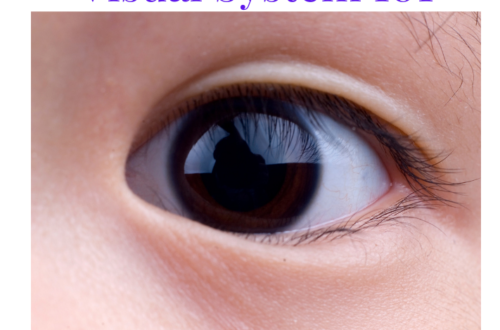
Visual System 101
September 30, 2021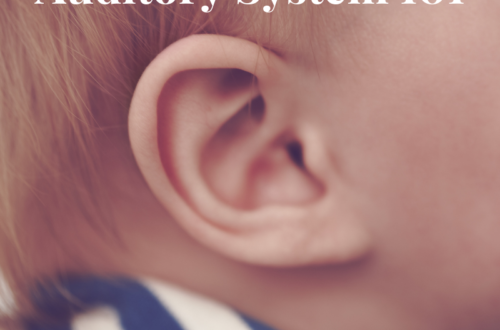
Auditory System 101
October 8, 2021